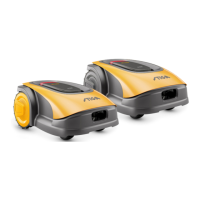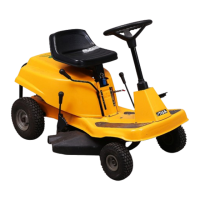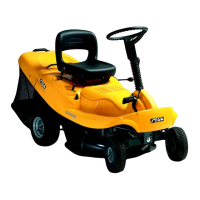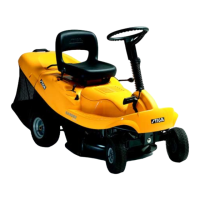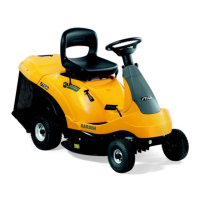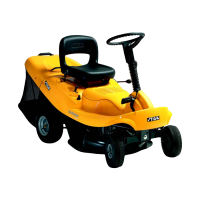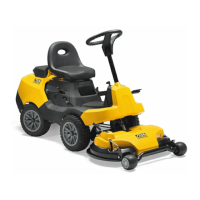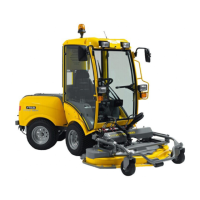3
EN
2.1.3. MAIN VERIFICATIONS FOR THE INSTALLATION
OF THE PERIMETER CABLE:
1. Check that the maximum slope of the work area is less
than or equal to 45% and observe the rules shown in Fig. 3.
WARNING:
slope of 45%.
WARNING:
2. Check the entire work surface: assess the obstacles and
areas to be excluded from the work area, which must be
delimited with the perimeter cable.
2.2. CRITERIA FOR INSTALLING THE PERIMETER
CABLE
Below are the criteria for installing the perimeter cable, for more
detailed information please refer to the Smart User Manual.
MINIMUM DISTANCES
STRUCTURAL ELEMENT
MINIMUM CABLE
INSTALLATION DISTANCE
FROM THE STRUCTURAL
ELEMENT
Paving or driveway at the same
level as the lawn
5 cm.
Moat or Walls 35 cm.
Hedge or plant with protruding
roots
30 cm.
Swimming pool, Overflow
pond, Unprotected public
road
90 cm.
Swimming pool or road at the
end of a descent
150 cm.
TYPES OF OBSTACLE DELIMITATIONS
X-PASSAGE BETWEEN TWO DIFFERENT SECTIONS OF
PERIMETER CABLE
X>= 70 cm (Fig. 4)
The obstacle can be delimited by overlapping the outward
and return cable sections without crossing them.
X< 70 cm (Fig. 5)
The obstacle can be delimited by spacing the two sections
of the return cable by at least Y= 30 cm, If the obstacle is
reasonably strong it can be left unprotected.
TRANSITIONS BETWEEN DIFFERENT AREAS OF THE
GARDEN
CORRIDOR WIDTH Z
Z>= 70 cm (Fig. 6)
The area (Fig. 6 A) can be reached by the robot lawn mower
Z< 70 cm (Fig. 6)
The area (Fig. 6 A) cannot be reached by the robot lawn
mower and is considered a "Closed Area".
CAUTION:
The operating area and in general the areas
delimited by a non-crossable fence.
Ensure that the fence is suitably enclosed or
operating.
2.3. COMPONENTS INSTALLATION
ELECTRICAL HAZARD:
provided by the manufacturer. Improper use
may cause electric shock and\or overheating.
CAUTION:
Danger of cutting hands.
Use protective gloves to avoid cutting your
hands.
CAUTION:
Danger of dust in the eyes.
Use safety glasses to avoid the danger of
dust in the eyes.
ELECTRICAL HAZARD:
all the installation operations. If necessary
2.3.1. INSTALLATION OF THE PERIMETER CABLE
POSITIONING WITH PEGS
1. Run the perimeter cable starting from the installation area
of the charging base.
2. Run the cable along the entire length of the route and secure
it using the pegs provided (Fig. 7.B) approximately 100 cm
apart, and complying with the installation requirements
provided(See Par. 2.2).
3. Leave 2 m of cable or more to subsequently cut it to size
in the nal phase of connection.
4. When making a bend, position the cable in such a way
to ensure that the bending radius is approximately 20 cm
(Fig. 7.A).
WARNING:
the ground along its path to prevent the robot
2.3.2. CHARGING BASE INSTALLATION
Install the charging base aligned with the perimeter cable
so that the robot will be able to access it by navigating the
perimeter cable clockwise.
1. Check the installation requirements as indicated in Par. 2.2.
2. If necessary, prepare the ground so that the surface of
the charging base is at the same level as the lawn, the
ground must be perfectly at and compact in order to
avoid deformation of the surface of the charging base.
3. Remove the cover (Fig. 8.C).
4. Position the charging base aligned with the perimeter
cable (Fig. 8.D2) so that the robot is able to access it by
navigating around the perimeter cable clockwise.
5. Insert the two ends of the cable into the appropriate slots
(Fig. 8.E2).

